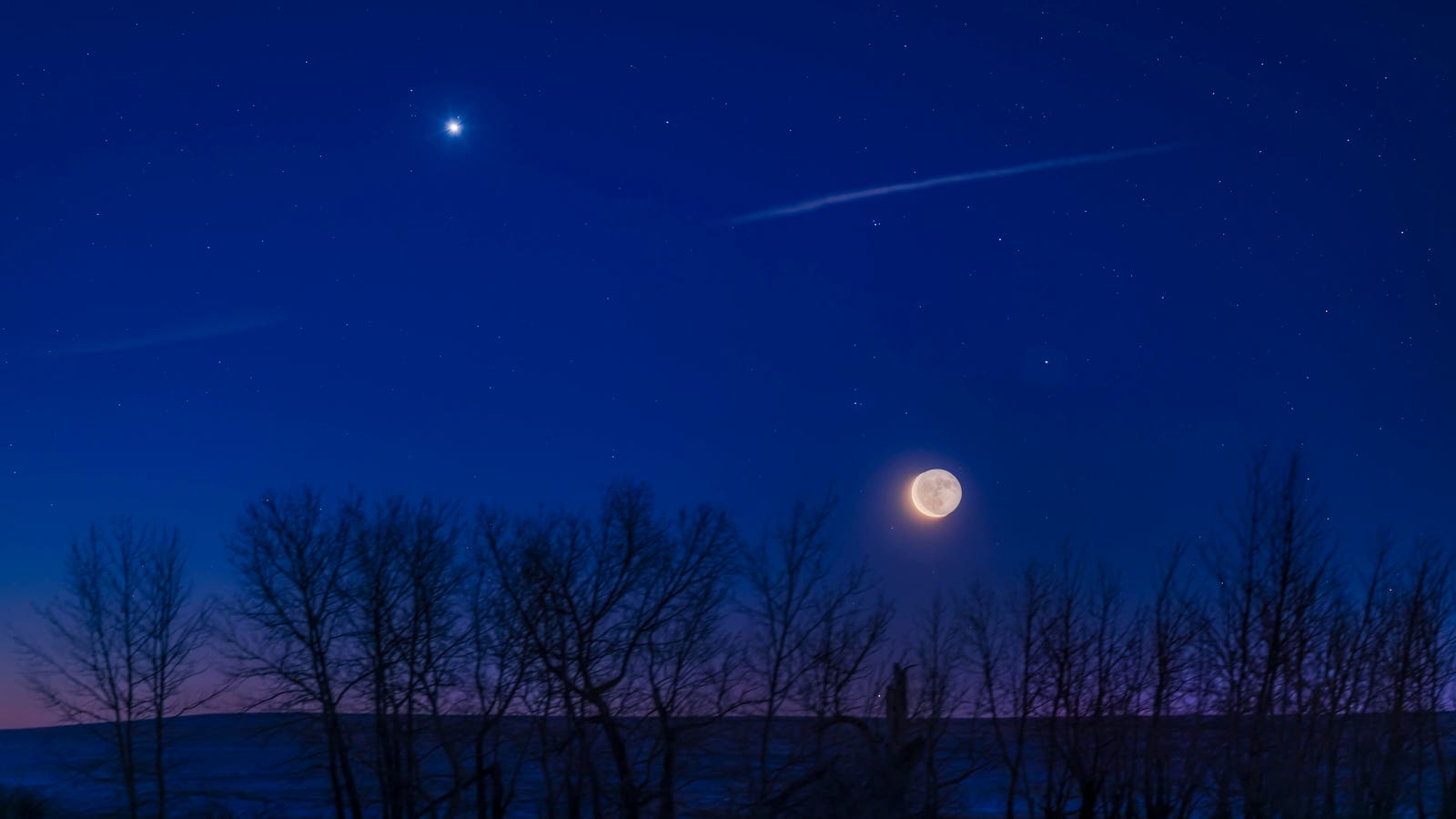Saturday evening’s meeting of the crescent moon and distant red supergiant star Antares will require no equipment beyond the naked eye. (Photo by: Alan Dyer/VWPics/Universal Images Group via Getty Images)
VWPics/Universal Images Group via Getty Images
Skywatchers on Saturday night will be treated to the gorgeous sight of a waxing crescent moon close to Antares, an unmistakably bright red supergiant star shining in the south. Antares, the brightest star in the iconic constellation Scorpius, will have an obvious reddish color, hence its name, which means “rival of Mars.” You’ll need only naked eyes and good timing to see the pair — here’s how.
Where And When To Look
On Saturday, Aug. 30, step outside about 45 minutes after sunset and face the southwest horizon. If you have a cloud-free sky, you’ll see the moon— almost at first quarter phase — shine as by far the brightest object in that part of the sky. Below and slightly to the right of the moon will be Antares, easily visible as twilight deepens.
Both the moon and Antares will set fairly soon after nightfall, so aim to catch the view within the first hour of darkness.
What You’ll See
The moon will shine as a plump crescent, its rugged terrain dramatically lit along the dividing line between night and day — what moon gazers call the terminator. Antares, by contrast, will gleam as a reddish point of light. A a red supergiant star some 555 light-years away, Antares is one of the largest stars visible to the naked eye, and its color makes it easy to distinguish. In darker skies, the shape of the upper part of the constellation Scorpius will also be visible.
Saturday, August 30: Moon and Antares
Stellarium
Observing Tips
As well as being on time to observe this post-sunset sky sight, try to bring along a pair of binoculars. Any kind of magnification will get you fabulous views of the moon, particularly along the terminator, where you’ll see a bubbling landscape of craters on the lower portion of the moon.
What’s Next In The Night Sky
If you can stand an early start, there’s currently a five-planet “parade” going on in the east an hour before sunrise. Jupiter and Venus dominate, with Saturn in the south. Those three naked-eye planers are joined by Neptune (close to Saturn) and Uranus, though both of those outer planets are impossible to see with the naked eye.
For exact timings, use a sunrise and sunset calculator for where you are, Stellarium Web for a sky chart and Night Sky Tonight: Visible Planets at Your Location for positions and rise/set times for planets.
Wishing you clear skies and wide eyes.









